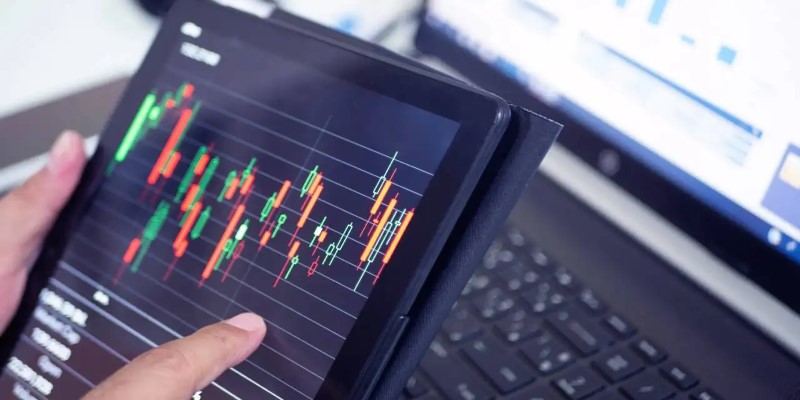Save Big with the Best Margin Rates at Online Trading Platforms
Investing in the stock market is about finding the best opportunities, and if you are trading on margin, that also includes securing the best margin rates at online brokers. Margin accounts at online trading allow you to leverage your buying power by borrowing funds from your broker. That means, however, that leverage comes with a cost-interest. Avoiding borrowing costs and maximizing returns increase by choosing the right broker.

Margin Trading: Guide This guide takes a closer look into what margin trading is, how to evaluate competitive-rate brokers, and why it's actually the fine print that matters as much as the rate itself.
What are Margin Rates, and Why Do They Matter?
Margin rates are the interest rates brokers charge on funds borrowed for trading. Essentially, when you trade on margin, you’re using a loan to increase your investment capacity, allowing you to seize bigger opportunities. However, the cost of this loan—the margin rate—directly impacts your profit potential.
For example, a higher margin rate can be quite painful, especially when volatility strikes during market periods. On the other hand, the best margin rates at online brokers give you that financial edge in reducing the cost of holding a leveraged position. Any active trader or investor will see this as low-cost margin trading.
Evaluating Brokers: What Defines the Best Margin Rates?
Finding the best margin rates is not just about spotting the lowest numbers. Different brokers offer varying fee structures, and many factors come into play when deciding which platform suits your needs. Here’s what you need to evaluate:
1. Interest Rate Tiers
Margin rates often follow a tiered structure based on the amount borrowed. For instance, some brokers may charge 6% on balances below $10,000 but lower the rate to 3% for balances exceeding $50,000. Understanding these tiers is essential if you plan to borrow larger sums, as the savings can be substantial.
2. Transparency in Costs
The advertised rate might not always reflect what you’ll pay. Some brokers include hidden fees or require certain account balances to qualify for the best rates. A clear, upfront fee structure is a sign of a trustworthy broker.
3. Promotions and Discounts
Many brokers offer promotional rates or loyalty discounts for high-volume traders. It’s worth comparing these perks across platforms to ensure you’re getting the most value.
4. Broker Reputation and Features
While securing a low margin rate is important, you shouldn’t overlook the broker’s overall reputation and the tools they provide. Advanced charting, educational resources, and efficient trading platforms can make a significant difference in your trading experience.
The Role of Low-Cost Margin Trading in Profit Maximization
Low-cost margin trading goes beyond securing favorable interest rates; it’s about aligning your trading strategy with cost efficiency. For instance, short-term traders can benefit significantly from lower rates as they frequently borrow funds to execute quick trades. Long-term investors, on the other hand, may prioritize brokers that offer fixed rates over time to stabilize borrowing costs.
In addition to the margin rate, consider how the broker supports your trading needs. Features like real-time margin calculators, risk management tools, and access to diverse financial markets can complement low borrowing costs and amplify your overall success.
Our Top Picks of the Best Brokers
Interactive Brokers
Often touted as a leader in the industry, Interactive Brokers is widely recognized for its exceptionally low margin rates, which can be as low as 1.5% for larger borrowing amounts. This makes it a favorite among professional traders and institutions managing substantial portfolios. Their platform provides global market access and advanced tools like algorithmic trading and in-depth market research. For those seeking customization and cutting-edge functionality, Interactive Brokers remains an unmatched choice. However, beginners might find the platform’s complexity overwhelming without prior trading experience.
Robinhood
Robinhood revolutionized the online brokerage industry by removing commission fees and creating an easy-to-use interface. While their margin rates aren’t the lowest in the market, they remain competitive, especially for casual traders and newcomers. Robinhood Gold, the premium subscription service, offers margin trading with transparent pricing and lower initial requirements. Beginners often appreciate the simplicity of the app and the educational resources tailored for learning the ropes of margin trading. However, the platform’s lack of advanced features may limit its appeal to more experienced traders.
Fidelity Investments

Fidelity stands out with a reputation for robust trading solutions and an emphasis on customer service. Offering competitive tiered margin rates, Fidelity accommodates both small-scale traders and those managing larger accounts. What sets Fidelity apart is its comprehensive suite of research tools, which includes market insights, advanced charting, and educational resources for traders at all levels. For long-term investors, Fidelity also integrates well with retirement planning and wealth management tools, making it a versatile option.
TD Ameritrade
TD Ameritrade combines competitive margin rates with one of the most comprehensive trading platforms available. Their Thinkorswim platform is particularly popular among active traders for its advanced charting capabilities, technical indicators, and risk analysis tools. While their margin rates may not rival Interactive Brokers for larger balances, the platform’s intuitive interface and wide range of investment options make it a strong contender. TD Ameritrade also excels in educational resources, offering webinars, tutorials, and virtual trading options for those looking to enhance their skills.
Wrapping Up: Why It Pays to Compare Margin Rates
Finding the best margin rates at online brokers is about more than just saving money; it’s about enhancing your overall trading experience. By carefully evaluating brokers based on their rates, transparency, and platform features, you can create a solid foundation for success in margin trading. Whether you’re a seasoned investor or just starting, aligning with the right broker will not only reduce your borrowing costs but also empower you with tools and resources to navigate the complexities of the financial markets confidently. So, take your time to research, weigh your options, and choose wisely—your bottom line will thank you.










